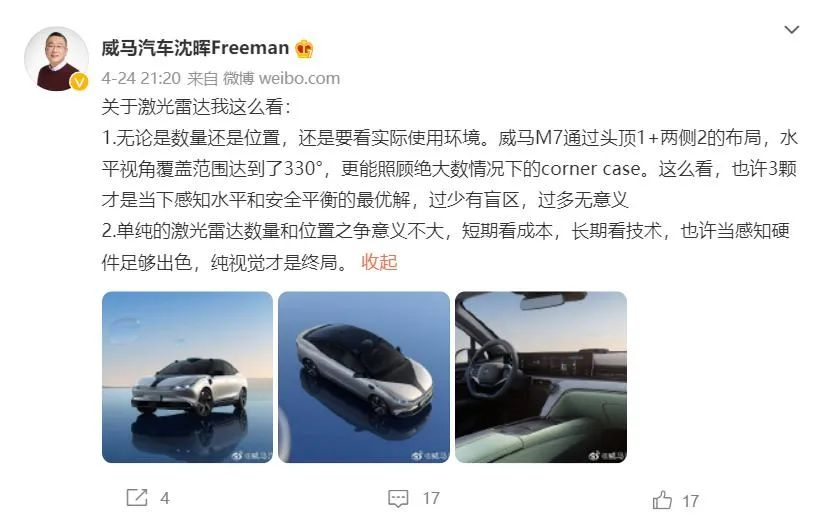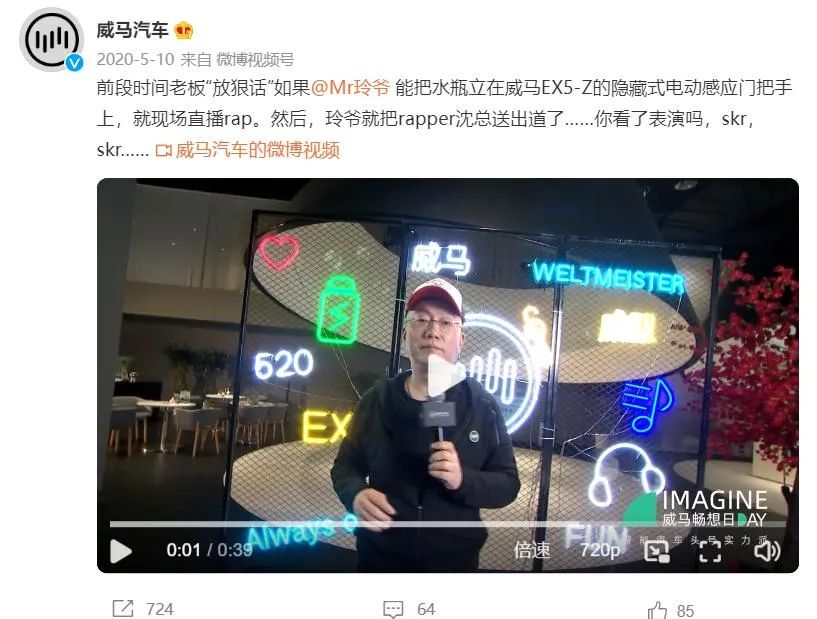Article by: Leng Zelin
Edited by: Wang Pan
“If you don’t speak out, you will perish in silence.”
This sentence from Lu Xun was originally intended to wake up the Chinese people, but it may have become the best footnote for some car companies in the current new energy market.
No one expected the impact of the epidemic to be so widespread. Since the beginning of this year, the entire automotive market has been hit by multiple negative news, regardless of energy sources or old and new levels, including rising raw material prices, subsidy countdowns leading to retail price increases, and supply chain disruptions forcing automakers to stop production and sales.
According to data from the China Passenger Car Association, in March this year, the retail and wholesale volume of broad-based passenger cars in China fell by 10.9% and 0.8% year-on-year respectively, while the narrow-based passenger cars fell by 10.5% and 1.6% respectively.
This data is expected to continue to decline in April. According to the China Passenger Car Association, the retail market for narrow-based passenger cars in April is expected to reach 1.1 million, a year-on-year decline of 31.9%. This is not good news for the new energy market, which has just started.
Due to the temporary lack of a rich product line and positive profitability for most new energy brands, the long-term “stagnation” of the automotive market will have a significant impact on the product rhythm of most companies. For example, Ideal postponed the release of the L9, and NIO delayed the delivery time.
At this year’s Automotive Hundred People Summit, even the sales leader BYD’s chairman Wang Chuanfu suggested, “To stabilize industry expectations, it is recommended that the purchase tax exemption policy for new energy vehicles be extended.”
According to analysis by insiders, the epidemic superimposed on the upstream raw material price increases will further accelerate the industry reshuffle, and car companies with lower sales volume will be hit the hardest.
As observed by Photon Planet, many automakers have a strong contrast with the hot new energy market. No matter how hard they promote, they are always gradually losing their voice.
Obviously, in the era of direct connection between car companies and consumers, many automakers have not yet learned how to “speak out,” and the cost of silence may be to become an outcast in this industry reshuffle.
WM Motor, silenced
I wonder how many people know that WM Motor has recently launched a new car called E.5, which includes two models: Pro and Zhi Kexing Edition, with a comprehensive subsidy price of 180,100 and 190,100 yuan, respectively. At least from the paper data and publicity, we did not find its highlights in this price range.
What new energy vehicles can you buy in this range? Aiways S, XPeng P5, and BYD Qin series. If the range is expanded to SUVs, the competition will be even more intense.
I don’t know if they know they are “in the wrong,” but WM Motor has given the first ten thousand owners a discount of 40,000 yuan, but it still hasn’t caused much of a stir on social media.It is not accurate to say that the WM E.5 is a new model. This car was officially launched in September last year and primarily aimed at the B2B market. The recent update, however, is more targeted towards the B2C market. Regardless of the potential highlights of the vehicle, both of these maneuvers actually contradict the market trend.
Many car companies started with the B2B market, and this includes Beijing Automotive New Energy, GAC New Energy, and NIO, among others. However, due to Beijing Automotive’s ups and downs, car companies have been actively trying to distance themselves from the B2B market. Despite this, WM chose to invest in this market instead of focusing on personal consumption of new energy. This strategy has not produced the desired results.
According to data from the China Passenger Car Association, the WM E.5 has only sold approximately 11,800 units in the six months since its launch.
Given that the B2B market contributes little to a brand’s profit and growth, this performance can be considered bleak. The only positive feedback, perhaps, is the sales figures at the end of the year. However, since last year, WM has consistently adopted a strategy of only reporting good news and keeping quiet about bad news.
This time, WM is selling this “ride-hailing car” in the personal market again, which gives the impression that this is just another desperate measure.
This is also related to WM’s two consecutive market failures after the EX5. According to data from the car owner’s association, the sales of the EX6 and W6 have been consistently low. The EX5, which has supported WM’s sales figures for a long time, is also showing a downward trend amidst the emergence of many new energy vehicle models. The E.5, which is aimed at the transportation market, has become WM’s main model.
It is worth noting that the EX6 was launched at the end of 2019, the W6 was launched in early 2021, and the flagship sedan M7 has yet to enter mass production after its debut last year. That is to say, WM has been struggling for almost two years, which coincides with the explosive growth of the new energy vehicle market.
The WM official maintains silence, but the founder and CEO Shen Hui is active on social media. From the bet with Meituan to supporting Li Bin’s statement “I don’t understand why people are still buying fuel-powered cars,” and even participating in the laser radar dispute with He XPeng, Xia Yiping, and Li Xiang, Shen Hui has been trying to join every “group chat.” However, the response has been lackluster.
It seems that WM Motor is learning from the once despised Tesla, with the founder rallying on stage and the host factory giving up marketing. However, Shen Hui lacks the personal charm brought by Musk’s grand vision, and WM Motor does not have Tesla’s constant pursuit of innovative products.
Regardless of the appearance of the E.5, WM Motor’s voice is gradually being overshadowed in the new energy market. The reason behind this is that speaking out in a crowded market is completely different from speaking out in an empty space, and product power is the first productive force of a car company, while marketing is just icing on the cake.
Following in the footsteps of Arcfox
Not only does WM Motor have a glorious history, but it is also not alone in experiencing “silence” in this year.
The history of BAIC New Energy is also quite tortuous. First, it won the domestic new energy sales championship for seven consecutive years, but then due to the impact of the epidemic, it fell to the bottom of the valley. At this time, Arcfox, which had been sealed for many years, was brought to the forefront and was highly regarded by BAIC New Energy.
BAIC Blue Valley has two brands, Arcfox and Beijing. They have separated the travel market from the personal consumer market, which is clearer than WM Motor’s thinking.
However, as a high-end personal consumer market brand, the sales volume of Arcfox was not high last year, and the total delivery volume in 2021 was only 4,993 vehicles. According to data from the China Association of Automobile Manufacturers, in the first three months of this year, Arcfox sold only about 3,000 vehicles in total, which is still significantly lower compared to similar products.
In the rapidly iterating new energy market, the fact that the sales volume has not improved after more than a year is almost equivalent to a vote against Arcfox from consumers.
In fact, the voice of Arcfox is not small.
In April of this year, Arcfox sponsored a concert by Cui Jian, which lasted for three hours in real life and was broadcast live on video platforms. More than 45 million people watched the concert online.
Going back to a year ago, during the same period, Arcfox and Huawei jointly released the Alpha S hi version, which caused widespread discussion with the world’s first vehicle equipped with Huawei’s automatic driving solution system and the first vehicle equipped with Hongmeng car system. Going further back, the intelligent manufacturing base established by BAIC Group and Magna also received a lot of attention.
If you observe carefully, it seems that Arcfox is not the protagonist in any of these three events, because the media always focuses on Magna, Huawei, and Cui Jian.
In fact, it cannot be immediately judged whether the Cui Jian concert was a successful marketing event, but we can deduce some of Arcfox’s thoughts based on the official response.On April 22nd, in response to rumors circulating online about “Ji Hu and Huawei falling out,” BAIC Blue Valley finally issued a statement on its official platform, denying the rumors and announcing that HI Day event would be held in Beijing in early May, where executives from BAIC Blue Valley and Huawei would attend together. This means that the long-delayed Alfa S hi version, which has been pushed back several times since the end of last year, is likely to finally reveal its true face.
However, due to Ji Hu’s low profile over the past year and the declining popularity brought by Huawei, it is highly probable that they want to bring in traffic for the hi version through their concert. At present, the degree of attention paid to the hi version by Ji Hu’s internal management may still be higher than that of consumers.
The current question, however, is whether the Alfa S hi version still has a competitive edge. With the hi version priced at 3.889-4.299 million yuan, and the Alfa S priced at 2.519-3.449 million yuan, at least the version without Huawei’s support has not shown enough potential. Meanwhile, the debut of Hongmeng OS was snatched by Huawei’s “favorite child” AskJian M5, and the remaining Huawei autonomous driving liberation solutions can break through in the midst of Tesla, NIO NAD, XPeng City NGP, ZhiJi IM AD.
Fearing No Criticism, But Fearing No Criticism
Still remembering the collision experiment done by Dongchedi between Han EV and Ji Hu Alfa S last year, Han EV sold over ten thousand units per month amidst complaints, while Ji Hu, who had better crash performance, remained in place.
Whether they are new forces or old manufacturers, their advancement in new energy is accompanied by countless criticisms. How to accept, respond to and correct them is a lesson that all manufacturers have to learn. Fearing no criticism, but fearing no criticism.
BYD won the championship through DM-i system and blade battery, and XPeng established an intelligent label with substantial R&D investment. In fact, there is no enterprise that has not been overwhelmed by criticism in this market. However, criticism is a negative influence, but it is also an opportunity to improve shortcomings.
On the other hand, silent enterprises not only refuse to respond to various news in the market, but also like to block the mouths of those who speak out.
Since November 2020, the WmAuto lock-up and spontaneous combustion incidents have gradually fermented. Until the end of last year, WmAuto chose to lock up some vehicles, under the guise of free maintenance and 200 yuan JD cards, which was discovered by the owners and caused a large number of complaints. What WmAuto chose was not a positive response, but according to some car owners, WmAuto directly disbanded several after-sales and rights protection groups.
Helpless, one WmAuto car owner even created a protest song called “Cheating Me for Just 200 Yuan,” which happened to call back Shen Hui’s rap from two years ago.
 The former president of Polestar Fox Auto, Yuli Guo, also gave a reply with “threatening” nature when addressing the community operation issues of Polestar Fox App. Subsequently, Yuli Guo faded out of the public view and reappeared with the title of Vice President of Xiaomi Auto and Political Commissioner of Xiaomi Auto Beijing Headquarters.
The former president of Polestar Fox Auto, Yuli Guo, also gave a reply with “threatening” nature when addressing the community operation issues of Polestar Fox App. Subsequently, Yuli Guo faded out of the public view and reappeared with the title of Vice President of Xiaomi Auto and Political Commissioner of Xiaomi Auto Beijing Headquarters.
After Yuli Guo’s resignation, the former general manager of Beijing Blue Valley, Yu Liu, also quit his position. The post of general manager was taken over by Kangwei Dai, who became the third general manager of Beijing Blue Valley in two years. In July of that year, the former marketing general manager of Polestar Fox, Chen Yu, joined Changan Mazda New Energy, and in addition, multiple executives of Beijing Blue Valley also applied to resign in 2021.
The biggest problem with frequent changes of executives is the lack of continuity in the company’s strategy.
Now, Zhang Yong, the CEO of NETA Auto, has previously served as the general manager of Beijing New Energy Marketing Company. He led Beijing New Energy to achieve a breakthrough in annual sales of 100,000 vehicles through large customer sales.
As mentioned earlier, Beijing Blue Valley has already distinguished Polestar Fox from its two brands in Beijing. Polestar Fox seems to be the main player in Beijing Auto’s personal consumption market, but Dai Kangwei’s first action after taking office was to resume “large customer sales.”
At the end of June 2021, Beijing Blue Valley announced a sales partnership of 1,000 Polestar Fox vehicles with Huaxia Chuxing, an enterprise that is 90% controlled by Beijing Automotive Group. In March 2022, Beijing Automotive delivered 70 Polestar Fox vehicles to Shouqi Group for travel services.
Amidst the chaos and changes, Polestar Fox also seems a bit opportunistic.
It should be noted that as long as a company is in rapid growth mode, it can almost cover up all problems, even if there are problems they will be ignored while rushing forward. However, if a company is in a business contraction state, the problems exposed are likely to be just one of many problems.
We do not deny that there is still a possibility of an outbreak in silence for Polestar Fox and WM, such as the upcoming WM M7 and Polestar Fox Alpha S Hi version, but if they cannot come up with powerful products to conquer the market, the possibility of dying in silence is also likely.
This article is a translation by ChatGPT of a Chinese report from 42HOW. If you have any questions about it, please email bd@42how.com.
